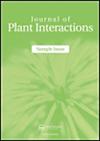纳米气泡在航天食品生产系统中的应用
IF 3.3
3区 生物学
Q2 PLANT SCIENCES
引用次数: 0
摘要
新鲜农产品是长期、跨空间营养的重要组成部分。然而,包括发射质量、系统功率和航天器舱室体积在内的资源限制限制了机组人员可用的农产品数量。增加植物根系的可用氧可以刺激整体生长,但典型的陆地方法(即喷射)不适用于微重力环境下的气液接触。陆地研究表明,在给定的足迹范围内,使用中性浮力的氧纳米气泡可以增加植物的营养和可食用质量密度。从而解决当前粮食系统中的营养缺口。本文简要地评估了探索宇航员的营养需求,并评估了目前航天生产供应的方法。最后,提出了利用纳米气泡技术提高收获指数的前景。最后,概述了纳米气泡集成以增强航天食品生产系统和在航天系统中使用纳米气泡所需的测试的高级综述。本文章由计算机程序翻译,如有差异,请以英文原文为准。
Incorporation of nanobubbles in spaceflight food production systems
Fresh produce is an essential part of long-term, interspatial nutrition. However, resource constraints including launch mass, system power, and spacecraft cabin volume limit the amount of produce available for crew. Increasing the available oxygen to a plant’s root system stimulates overall growth but typical terrestrial approaches (i.e. sparging) are inappropriate for gas–liquid contacting in a microgravity environment. Terrestrial studies show the use of neutrally buoyant oxygen nanobubbles increases the plant nutritional and edible mass density for a given footprint. Thereby, addressing nutritional gaps in the current food system. This paper briefly evaluates the nutritional requirements for exploration astronauts and assesses the current approach for spaceflight produce provision. Then, presents the perspective opportunity to increase harvest index by implementing nanobubble technologies. Finally, a high-level review of nanobubble integration to enhance spaceflight food production systems and testing necessary to use nanobubbles in spaceflight systems is outlined.
求助全文
通过发布文献求助,成功后即可免费获取论文全文。
去求助
来源期刊

Journal of Plant Interactions
PLANT SCIENCES-
CiteScore
5.30
自引率
6.20%
发文量
69
审稿时长
>12 weeks
期刊介绍:
Journal of Plant Interactions aims to represent a common platform for those scientists interested in publishing and reading research articles in the field of plant interactions and will cover most plant interactions with the surrounding environment.
 求助内容:
求助内容: 应助结果提醒方式:
应助结果提醒方式:


